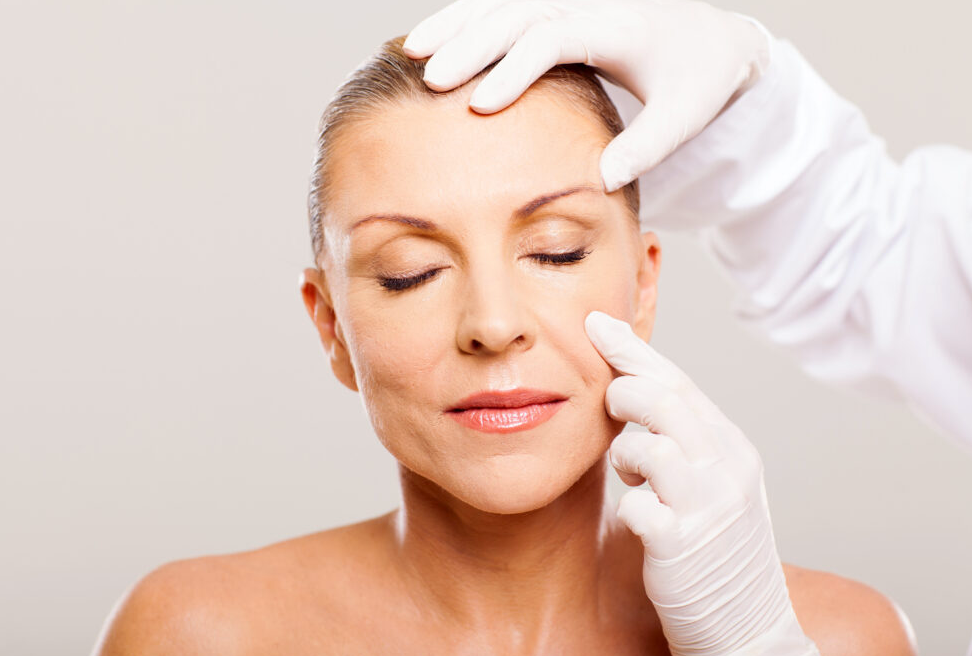Actinic Keratosis Treatment in Guilford
Expert Actinic Keratosis Treatment

Seeing an Actinic Keratosis Specialist
If you suspect you have actinic keratosis, it’s important to contact a dermatologist right away.
At Guilford Dermatology in Guilford, CT, our specialists typically use cryotherapy or cryosurgery with liquid nitrogen to eliminate damaged skin cells. For those with multiple lesions, other treatments like topical creams or light therapy may be recommended.
What is
Actinic Keratosis?
Actinic keratosis (AK) consists of rough, precancerous patches of skin that develop due to prolonged sun exposure. These lesions can be skin-colored or reddish and are commonly found on areas like the face, shoulders, and ears, where unprotected UV exposure is frequent. The skin in these areas may become swollen or hypersensitive. Picking at these lesions will not stop them from returning.
Individuals over the age of 40 are more susceptible to developing AK. If left untreated, these lesions can progress into squamous cell carcinoma or other types of skin cancer. Removing these lesions is often advised to minimize cancer risk.
What Actinic Keratosis Treatments Address
As the most common form of pre-cancer, approximately 10% of AK lesions can evolve into skin cancer. It can be challenging to differentiate between actinic keratosis and skin cancer, so your dermatologist may begin treatment with a biopsy to detect any cancerous cells and ensure a proper diagnosis.
Actinic Keratosis
Sun damage
Pre-cancerous skin cells
What To Expect
Getting Actinic Keratosis Treatment
If you notice rough, itchy skin that persists, it’s best to seek a consultation with a dermatologist. During your visit, the doctor will assess the affected area to determine if it’s an actinic keratosis or another skin condition.
Our board-certified dermatologists will examine your lesion(s) and explain the most appropriate treatment options. A biopsy may be performed to confirm the diagnosis and rule out skin cancer. This is crucial to accurately detect AK cells and guide the treatment plan.

Once AK cells are confirmed, your doctor will recommend a treatment plan to remove the damaged skin. Detailed aftercare instructions will be provided. Typically, you’ll receive biopsy results within one to two weeks. If cancerous cells are present, we will create a targeted treatment plan to remove them completely. If no cancerous cells are detected, we will offer prevention tips and recommend yearly full-body skin screenings.

Available Actinic Keratosis Treatments
The most common treatment for actinic keratosis is cryotherapy or cryosurgery. Using liquid nitrogen, this treatment freezes and destroys the damaged skin cells.
- Cryotherapy/Cryosurgery
- Topical Treatments
- Light Therapy
About Guilford Dermatology
At Guilford Dermatology, we prioritize personalized care and transparency from the moment you walk through our doors. Our physicians are dedicated to providing clear pricing and setting realistic expectations, helping you make informed decisions about your care. Our practice ensures you receive undivided attention by avoiding overbooking and rushing through appointments.
Frequently Asked Questions
Is actinic keratosis painful?
Many patients notice actinic keratosis by feeling it before seeing it. AK lesions can be rough, scaly, and sometimes become irritated due to friction. Our specialized treatments can help restore your skin while addressing potential cancer risks.
Does actinic keratosis go away on its own?
While some AK lesions may fade without treatment, they can reappear if the skin continues to be exposed to UV rays. Professional treatment is recommended to ensure that no cancerous cells are present in the affected skin.
Can I prevent actinic keratosis?
There is no guaranteed way to prevent AK, but limiting sun exposure is one of the best ways to reduce your risk.
Individuals over 40, those who spend a lot of time outdoors, or those with fair skin and a history of sunburns are more prone to AK. People with weakened immune systems are also at higher risk. Your doctor will review your medical history and create a personalized plan to help reduce your likelihood of developing more lesions.



